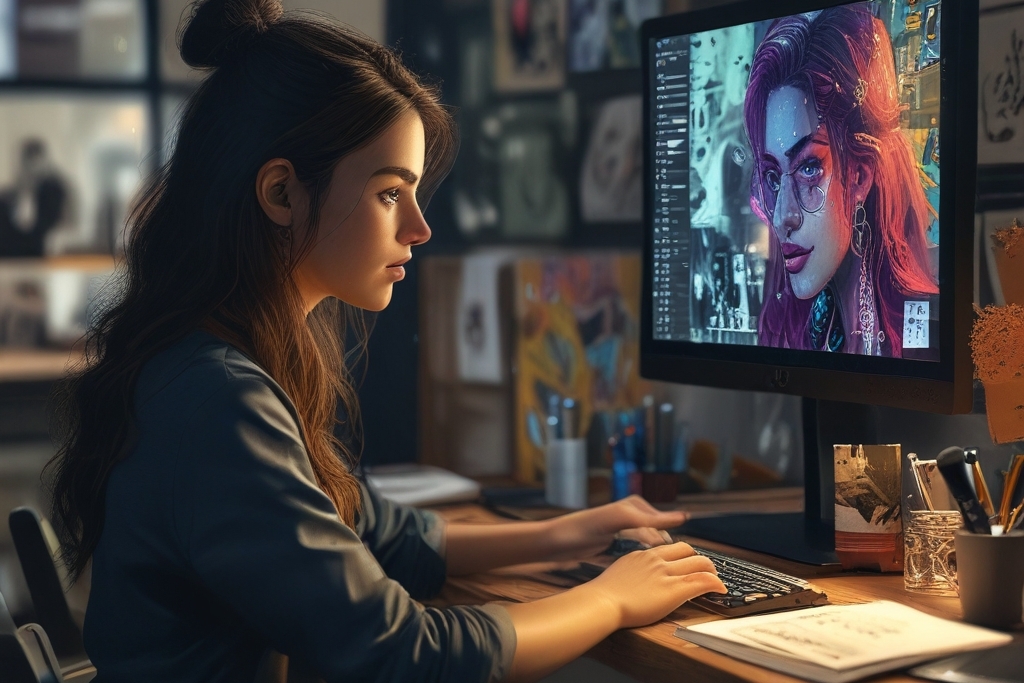Mastering 3D Avatar Creation Top Tips For Bringing Characters To Life
Creating a 3D avatar can be a thrilling endeavor, encompassing a mix of artistry, technology, and creativity. Whether for video games, virtual meetings, social media, or animations, a well-designed 3D avatar can make a significant impact. In this article, we’ll provide detailed tips to help you create stunning 3D avatars using ethical practices and adhering to Google’s AdSense policies. Let’s dive in.
Understanding the basics
Before you begin crafting your 3D avatar, it’s critical to understand the basic components and concepts involved. These include:
- Modeling
The process of creating the 3D structure or shape of your avatar. - Texturing
Adding colors, patterns, and materials to the 3D model to give it a realistic look.

Adding a skeletal structure to your model that allows it to move.
Bringing your avatar to life through movements and expressions.
Essential tools and software
Various tools can aid in creating 3D avatars. Some of the widely-used software options include:
- Blender
An open-source tool that offers comprehensive functions for modeling, texturing, rigging, and animating. - Maya by Autodesk
A professional-grade software used extensively in the film and gaming industries. - ZBrush
Renowned for its detailed modeling and sculpting capabilities. - Unity or Unreal Engine
If your avatar is intended for a game, these engines help in integrating and animating the character.
Tips for creating a remarkable 3D avatar
Conceptualization and planning
Start with a clear idea. Sketching your design on paper can offer a tangible blueprint to guide you during the modeling process. This step helps visualize the character’s personality, proportions, and unique features.
Start with a simple base model
Begin with a basic shape to establish the avatar’s primary form. This basic structure, often called a “low-poly model,” will serve as the foundation. It’s easier to add details as you progress rather than adjusting complex models.
Focus on anatomy
Understanding human anatomy or the anatomy of the creature you’re designing is crucial. This knowledge ensures your model will move naturally. Reference images and anatomy guides can be invaluable resources.
Employ symmetry tools
Using symmetry tools can save time by allowing you to model one side of the avatar while mirroring the changes on the other side. This technique ensures balanced, symmetrical details.
Detail gradually
Once the basic shape is accurate, start adding finer details. Use sculpting tools to define muscles, facial features, and textures. Avoid rushing; details make a significant difference in the final outcome.
Texture with care
Texturing is more than slapping colors on your model. Pay attention to the material properties and use high-resolution textures. Hand-paint details where needed and consider how different lighting conditions will affect the texture.
Rigging for realism
Rigging is the backbone of animation. Ensure your rig is properly set up to allow for a full range of movement. This step involves adding bones, skinning your model, and making sure the mesh deforms correctly with movements.
Animate with fluidity
When animating, start with key poses and gradually fill in the in-between frames (keyframing). Focus on realistic movements by studying references or motion capture data. Smooth transitions and natural motion are critical.
Test and iterate
Once the avatar is modeled, textured, rigged, and animated, it’s time to test. Look for any visual glitches, unnatural movements, or texture issues. Iteration is key – refine and perfect your avatar through ongoing testing.
Ethical considerations and respectful design
While creativity is essential, it’s equally important to be mindful of ethical considerations:
- Cultural sensitivity
Avoid cultural appropriation and respect diverse cultural symbols and attire. - Inclusive representation
Strive for inclusivity by representing different genders, ethnicity, and body types appropriately. - Respect privacy
When creating avatars based on real individuals, obtain explicit consent and respect their privacy.
Creating a 3D avatar is a blend of art and science. By understanding the basics, utilizing the right tools, and following detailed tips, you can produce captivating avatars that resonate with users. Remember to respect ethical guidelines and represent diverse communities inclusively. Happy modeling!
By adhering to the outlined content policies and ethical considerations, you ensure your work is accessible, respectful, and engaging. Happy modeling!

